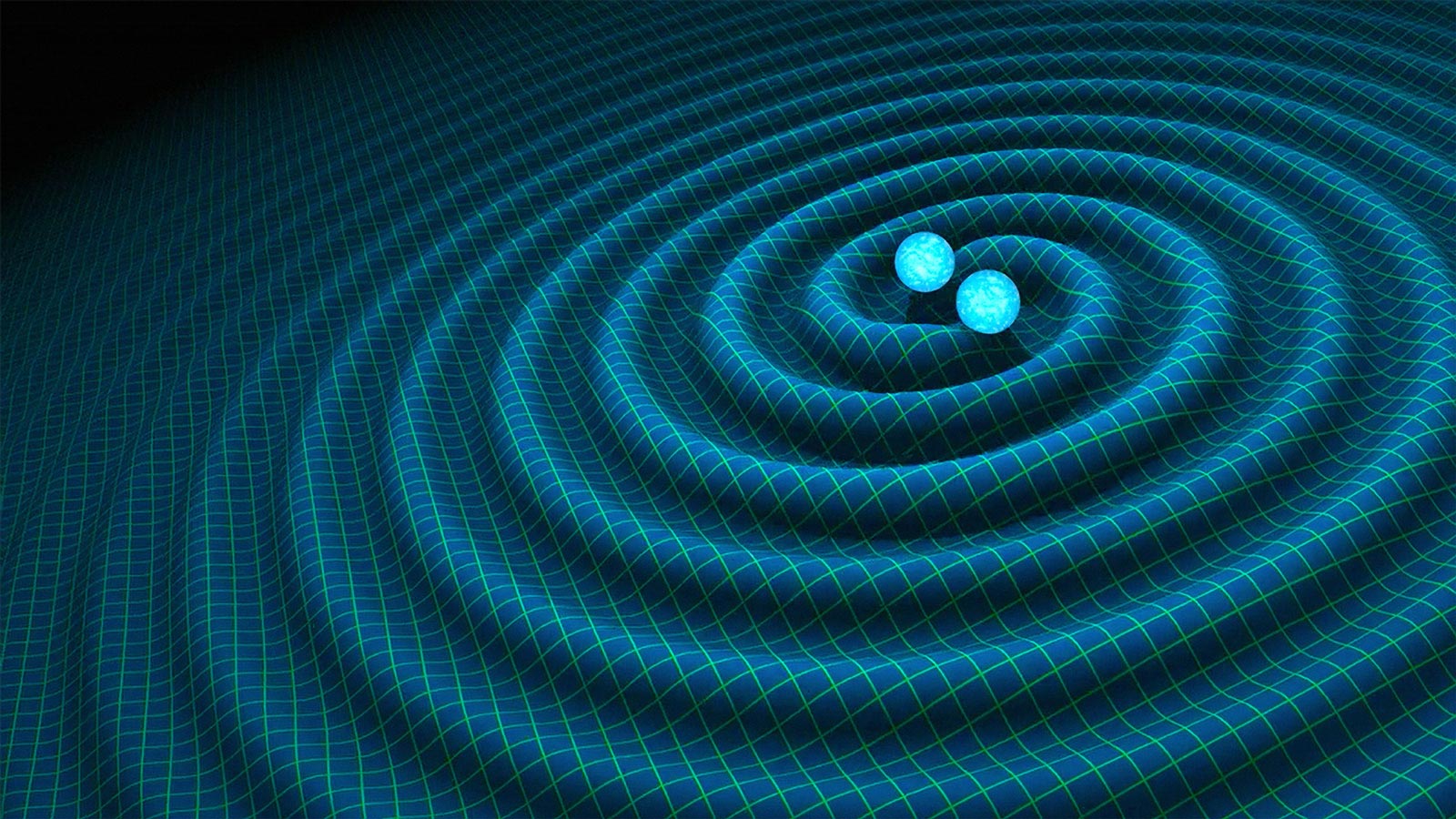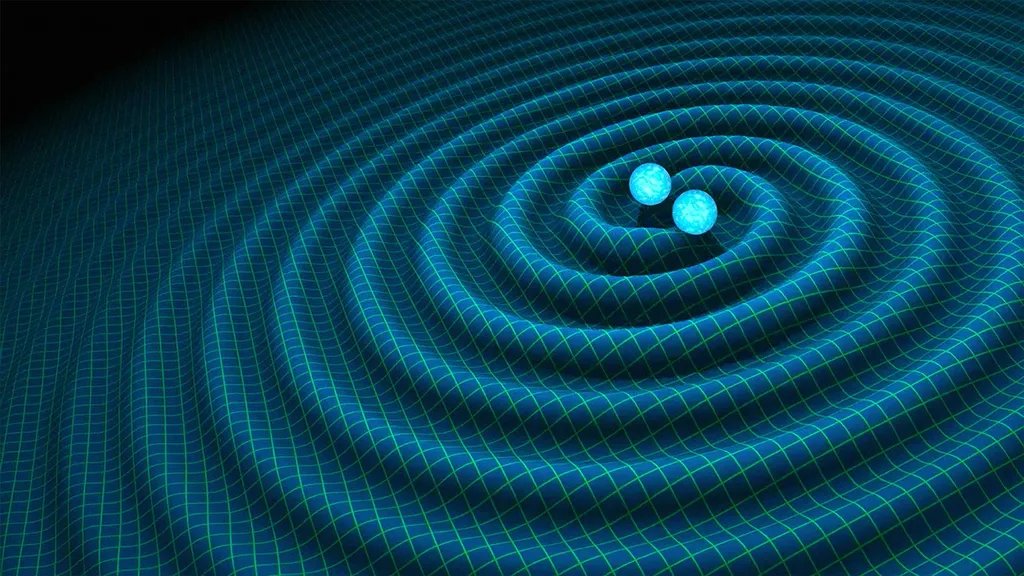

An artist’s impression of gravitational waves generated by binary neutron stars. Credit: R. Hurt/Caltech-JPL
Deep Follow-up of GW151226 — an ordinary binary or a low-mass ratio merger?
Now that we’ve been detecting gravitational waves (GWs), we’d like to better understand the systems that generate GWs. The GWs found so far have been from collisions of celestial bodies, like black holes and neutron stars. Once we have detected a GW, we use “Bayesian Inference” to deduce the masses and spins of the objects that shot off the GW (to understand inference, check this video by 3blue1brown). Then we can use our mass and spin deductions to answer: where do these bodies exist in the Universe? Are these colliding bodies huddled together in galaxies or isolated in space? But, it gets tricky to answer such questions if our deductions of the masses and spins are incorrect! So, in my recent study, I have built a “deep follow-up” tool to determine which masses and spins better describe a given GW event.
I have used this deep follow-up tool to study the “boxing-day” gravitational wave, GW151226. Initial work deduced that this GW was from the merger of two black holes (BHs), both with standard masses and spins (case A). However, recent work has deduced that the GW might have originated from a strange system: one BH could be much larger than the other and with a faster spin (case B)! A diagram representing these cases can be seen below on the right side of Figure 1.

Figure 1: GW151226’s two personalities. (Left) The initial and new Bayesian inference results are plotted in orange and blue, respectively. We perform a deep follow-up on the pinned points, cases A and B. (Right) Illustrative versions of what cases A and B represent. Note: black hole cartoons inspired by NASA’s Field guide to black holes. Credit: OzGrav
The “deep follow-up” method involves drilling into these cases to determine which binary BH system better describes the GW. First, we pin down some deduced properties of the merging black hole system, such as the mass-ratio q (the ratio of smaller BH mass divided by the bigger BH mass) and xeff (the effective spin of the binary in the z-direction). The pinned value for the initial and new results is on the left side of Figure 1. We then use Bayesian inference at these pinned values. The output allows us to compare case A and case B. We find that both the standard (case A) and irregular (case B) black hole pairs can describe GW151226, giving the event something like a dual-identity!
This dual-identity gives GW151226 much more character than initially considered. For example, we initially believed that GW151226 came from an isolated black hole pair. However, a BH pair from case B is more likely to be found at the center of an active galaxy! So, finally, I wonder: are there other GW events with split personalities? Hopefully, our deep follow-up method will be able to settle these questions.
Written by OzGrav researcher Avi Vajpeyi, Monash University.

